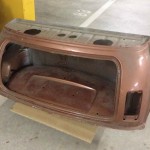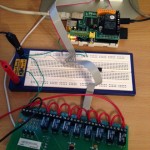Recently I updated the kernel of CentOS, after this update, I was not able to start any Virtual Machines in VMware Player. The following steps solved my problem:
1. Stop the VMware service with:
service vmware stop
2. Remove the kernel Module:
rm /lib/modules/$(uname -r)/misc/vmmon.ko
3. Build a new kernel module for the running kernel:
The variable $(uname -r) gives you the running kernel version.
If you get an error, make sure you have the package “kernel-devel” installed (yum install kernel-devel).
vmware-modconfig --console --build-mod vmmon /usr/bin/gcc /lib/modules/$(uname -r)/build/include/
4. Load Kernel Module:
depmod -a
5. Start the Service again:
service vmware start
The vmmon service should now start and You’re able to start the VM’s again. Good luck 😉

